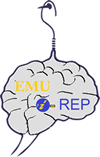JavaScript is disabled for your browser. Some features of this site may not work without it.
Land Use - Cover Change Assessment Framework: Famagusta North Cyprus
Akingbaso, Ebunoluwa Yetunde
Date:
2014-08
Abstract:
ABSTRACT: In recent studies, assessing the impact caused by human- want on several land cover and land use classes has become important, as the so-called irrelevant changes contribute to the environmental hazards, most especially within the immediate climate condition of that area i.e local climate temperature. Also such influences are observed on the vegetation type and cover and the rate of under-ground disturbances. Accounting for change around urban centers within the suburban communities to identify growth by examining some of the already specified macro indicators on the micro changes have become necessary due to the grass root implications of some social, bio-physical and or economic forces.
The output of the complicated and entangled interactions between bio-physical and socio-economic forces over space and time is land use. Placing forward contemporary issues related to land use-cover change, socio-economic (i.e human factor) has been said to contribute greatly to the alterations in the environment, such issues related to land services and land cover changes have considered construction which results to fragmented land. On a global scale, climate change, urbanization, globalization, suburbanization are some of the identified drivers of land use changes. But beyond this, necessity demands that we assess how these macro-scale factors can be examined to some relative degree at the micro-level of Famagusta North Cyprus.
The context of this work brings to the front line the impact of drivers of land use_ cover changes on the distribution of ecological cover and the built environment. Remote sensing and GIS methods, agent base and meta-analysis were used to describe and explain the relationship between population dynamism, urban growth, economic variance and social needs that has subjected the city of Famagusta to influence changes on her immediate suburban areas. Although the secret behind the choice of polarized urban pattern was not revealed in this research, but the contributing factors encouraging a consistency of change were discussed in detailed. Thus the result shows that within four decades at 4 time-steps observation (1986-2012), population increase relates with the increasing housing demand both (individual and social). This definitely demanded the provision of social amenities such as roads, green space as more building blocks are created within the city. Subsequently, the encroachment of land leads to expansion of territorial boundary as the case is between Famagusta city and Tuzla, the consequence of which is urban suburban merging and or in some cases, feature of possible interwoven territory will show up especially along a linear axis. These observations do not take place without the inclusion of a change in land use and land cover.
The research therefore sets up an assessment framework to contribute to the suggestion for the need to implement proper monitoring and planning of a much managed environment by considering factors responsible for the present situation and the distribution of change.
Key words: Land use- cover changes, urban, suburban, population, social amenities.
…………………………………………………………………………………………………………………………
ÖZ: Arazi kullanım kararları üzerine, mevcut gelişim taleplerinden kaynaklanan süreç ve dinamikler araştırıldığında, son dönemdeki araştırmalar, bu durumun çevresel tehdit ve tehlikeler oluşturrduğuna dikkat çekmektedir. Yerel ölçekteki ani iklim değişilikleri bu etkilerin başında gelmektedir. Bu etkiler, aynı zamanda birki örtüsü ve yeraltı kaynakları üzerindeki olumsuzlukları da içermektedir. Kentsel çevrelerdeki değişimlerle birlikte kırsal etkileşim de farklılaşmakta ve ‘çeperdeki’ gelişmelerle birlikte bu etkileşim hem kentsel hem de kırsal büyümede belirleyici olmaktadır. Bu bağlamda makro ölçekteki değişimlerle birlikte, mikro ölçekdeki etkileri de gözönünde bulundurularak farklı boyutları(sosyal,bio-fiziksel,ekonomik) ile ele alınmalıdır.
Farklı ölçek ve dinamikler açısından etkileşim arazi ve hizmet alımı konularında yapılaşma ile insan boyutu da devreye girdiğinde fiziksel çevrede önemli değişiklikler meydana getirmektedir.Bu bağlamda bölünmüş arazi ve dağınık arazi kullanım kararları en sıkıntılı olanlardır. Küresel ölçekte, ikli değişiklikleri, kentleşme, küreselleşme, kırsal kentsel arakesitinin genişlemesi bu sıkıntıları yaratan göstergelerdendir. Bu bağlamda, KKTC, Mağusa’nın kentsel gelişim ve arazi kullanım değişiklikleri ele alınarak makro ölçekteki etkilerin mikro ölçeklerdeki yansımaları haritalandırma metodu ile araştırılacaktır. Bu çalışma sonucunda, arazi kullanımındaki değişimin ekolojik ve yapılı çevredeki etkileri üzerinde durulacaktır. Bu anlamda GIS metodu ile, meta-analiz sistemi kullanılarak nüfus dinamikleri, kentsel gelişme, ekonomik çeşitlilik, ve sosyal etkileşim konuları kensel kırsal arakesitinde (Suburban) iredelenecektir.Süreç içerisindeki bu değişimin tutarlılığı ele alınacaktır.
Araştırma sonuçları açısından son 40 yılı gözönünde bulundurarak dört aşamalı bir değerlendirme yapıp, konut stoğu ve talebi ile arazi kullanım kararlarındaki değişiklikler ortaya konmaktadır.Araştırma, arazi kullanımı ile ilgili bir değerlendirme çerçevesi sunarak, bu değişimin sürdürülebilir bir yapıda olabilmesi için, denetim ve gözetim konularında etkin bir araç olarak kullanılacak bir yaklaşım sunmaktadır.
Anahtar Kelimeler: Arazi-kullanım değişiklikleri, kentsel-kırsal arakesiti, ekoloji.
Description:
Master of Science in Urban Design. Thesis (M.S.)--Eastern Mediterranean University, Faculty of Architecture, Dept. of Architecture, 2014. Supervisor: Assoc. Prof. Dr. Resmiye Alpar.
Files in this item
This item appears in the following Collection(s)
Search EMU I-Rep
Browse
-
All of DSpace
-
This Collection
My Account
Statistics
Eastern Mediterranean University, Özay Oral Library, Famagusta, North Cyprus via Mersin 10 TURKEY
If you find any errors in content, please contact osman.soykan@emu.edu.tr
If you find any errors in content, please contact osman.soykan@emu.edu.tr

EMU I-Rep by Eastern Mediterranean University Institutional Repository is licensed under a Creative Commons Attribution-Gayriticari-NoDerivs 3.0 Unported License
DSpace software copyright © 2002-2011 Duraspace








